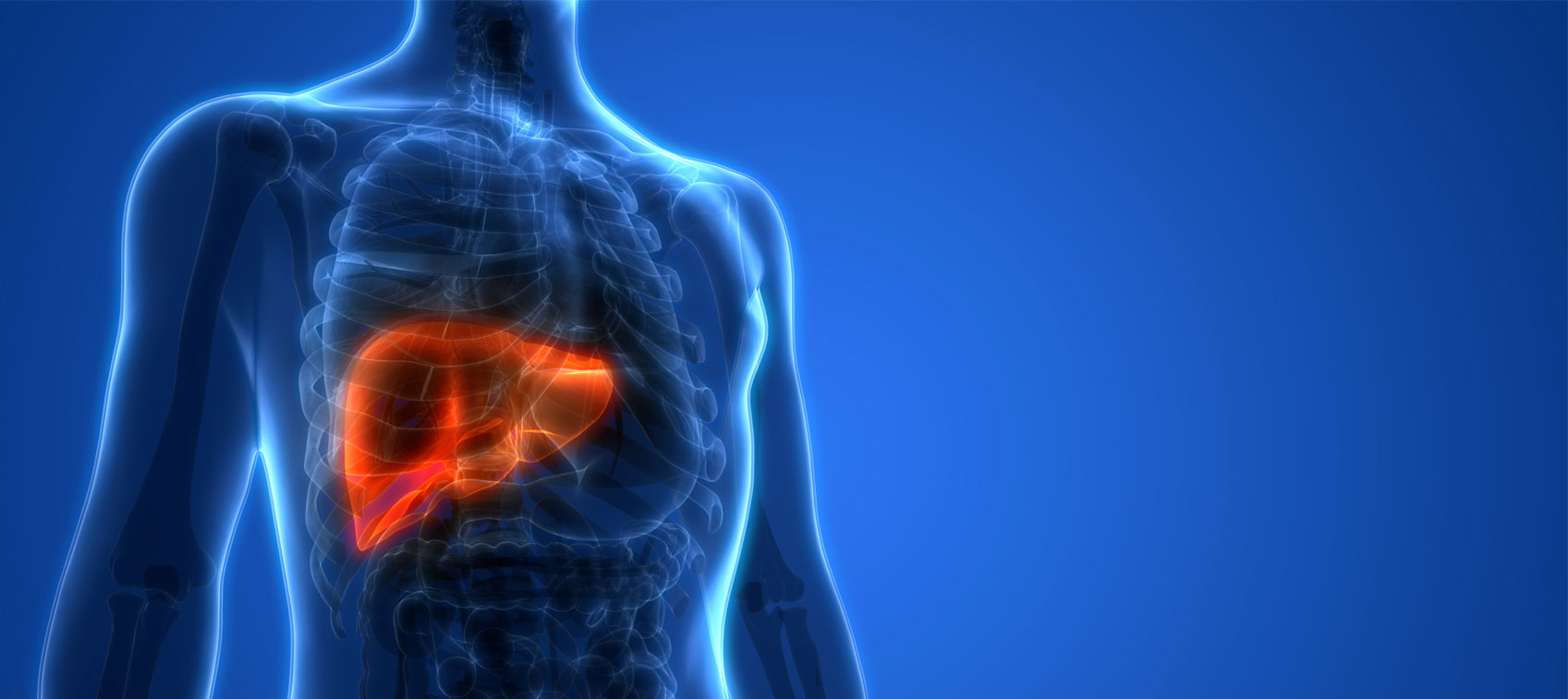
It used to be when someone was diagnosed with liver disease, it was related to alcohol abuse or viral hepatitis. Today, the most likely cause is nonalcoholic fatty liver disease—and more than half of the people who have it also have diabetes.
What Is Fatty Liver Disease?
Nonalcoholic fatty liver disease represents a spectrum of abnormalities with varying degrees of severity:
- Simple nonalcoholic fatty liver disease: Early-stage disease, defined as a greater than 5 percent accumulation of fat in the liver.
- Nonalcoholic steatohepatitis (NASH): A more severe form, marked by inflammation and cell damage and death.
- Cirrhosis: Progression of NASH, as normal liver tissue is replaced by fibrosis (scar tissue) and function is impaired.
- End-stage disease: Excessive scar tissue, resulting in loss of function and high risk of liver cancer and liver failure.
Not everyone with simple fatty liver disease progresses to NASH, but it is estimated that one in five patients do develop more serious disease. And given the huge burden of fatty liver disease, accompanied by our increasing rates of obesity and diabetes, NASH is rapidly becoming the most common cause of liver transplants.
Links Between Fatty Liver & Diabetes Mellitus
So, what is the link? Does fatty liver cause type 2 diabetes, or does diabetes cause fatty liver disease? Not exactly—but these conditions do have a lot in common.
- Excess weight: Approximately 85 percent of people who have type 2 diabetes are obese or overweight. One-third of overweight people, and 90 percent of those who are obese, have fatty liver disease.
- Abdominal fat: Excess visceral fat in the abdominal area is highly predictive of fatty liver disease and type 2 diabetes, regardless of weight.
- Insulin resistance: The cells’ reduced ability to respond to insulin, resulting in blood sugar elevations, is a defining characteristic of type 2 diabetes. Many experts now consider fatty liver disease to be a part of metabolic syndrome: a cluster of disorders related to insulin resistance.
- Risk factor for heart disease: Both fatty liver disease and diabetes are independent risk factors for cardiovascular disease and premature death.
It’s a tangled web. If you have one of these disorders, you are at increased risk of developing the other. Furthermore, fatty liver disease contributes to worsening blood sugar control, and type 2 diabetes doubles the likelihood of simple fatty liver progressing to NASH, cirrhosis, and liver failure.
Weight Loss: The #1 Therapy for Fatty Liver & Type 2 Diabetes
The good news is that both conditions can be helped with weight loss, lifestyle changes, and targeted nutrients.
I have always promoted weight loss as a primary therapy for type 2 diabetes, but it is also a very effective treatment for fatty liver.
Italian researchers reported that patients who lost 7–10 percent of their body weight with an intensive diet and exercise program had significant reductions in liver fat, remission of NASH, and improvements in liver fibrosis.
The Best Diet for Fatty Liver & Type 2 Diabetes
Weight loss requires diet changes, and the most important one is eliminating sugars and starches. Fructose—present in similar amounts in sucrose, high-fructose corn syrup, and most other added sugars—is especially problematic for fatty liver disease, as it increases the accumulation of fat in the liver.
Reducing sugar intake can reap rapid results. In a 2019 study, adolescent boys with fatty liver had significant improvements after just eight weeks on a low-sugar diet.
Specific foods that support the liver and improve diabetes and overall health include:
- Cruciferous vegetables, garlic, onions, and other sulfur-rich foods.
- Healthy fats such as avocados, nuts, salmon, and olive oil.
- Fiber-rich and fermented foods that nurture the gut microbiota.
- Coffee. Long known to reduce the risk of type 2 diabetes, a 2019 study found that drinking more than three cups a day was highly protective against nonalcoholic fatty liver disease.
Pharmaceuticals for Fatty Liver Disease Management
Big Pharma is spending millions in a race to develop effective drugs for fatty liver disease and NASH. Given the prevalence of these conditions, the payout will be astronomical. To date, however, not a single medication has been approved.
One study that did report a positive outcome involved patients with NASH and compared the effects of the diabetes drug Actos (pioglitazone), high-dose natural vitamin E (800 IU), or a placebo. Contrary to expectations, vitamin E stole the show, improving liver enzymes, inflammation, fatty infiltration, and disease progression.
Supportive Supplements
Although pharmaceutical companies have struck out so far, a number of vitamins, minerals, and nutraceuticals are promising therapies for nonalcoholic fatty liver disease.
- Antioxidants: Based on the above study, vitamin E (400–800 IU/day) should be first-line therapy. Other protective antioxidants include vitamin C (1,000 mg), selenium (100–400 mcg), and alpha lipoic acid (600 mg).
- Silymarin: Extracted from milk thistle, silymarin (420–600 mg) is a trusted botanical for treating liver diseases.
- Curcumin: A potent natural anti-inflammatory, curcumin (1,000 mg) has been shown in clinical trials to have positive effects on fatty liver disease.
- Berberine: My #1 recommendation for diabetes, berberine (500 mg 3 times a day) has also been shown to improve fatty liver disease.
The Liver’s Remarkable Ability to Regenerate
Unfortunately, most of the 80–100 million Americans who have fatty liver disease don’t know they have it. Lab test abnormalities reveal advanced disease, but slight elevations in liver enzymes may be overlooked. As a result, fatty liver disease often goes undiagnosed and untreated.
Here’s what I recommend. If you have type 2 diabetes and/or you are obese, have a large waist circumference, or eat a lot of sugar and refined carbs, assume that you have some degree of fatty liver disease—but don’t despair.
With proper support, your liver has a remarkable ability to regenerate. By following the above suggestions for weight loss, diet, and targeted supplements, you have an excellent chance of not only reducing—and even reversing—liver damage, but also improving your blood sugar control and overall health.


